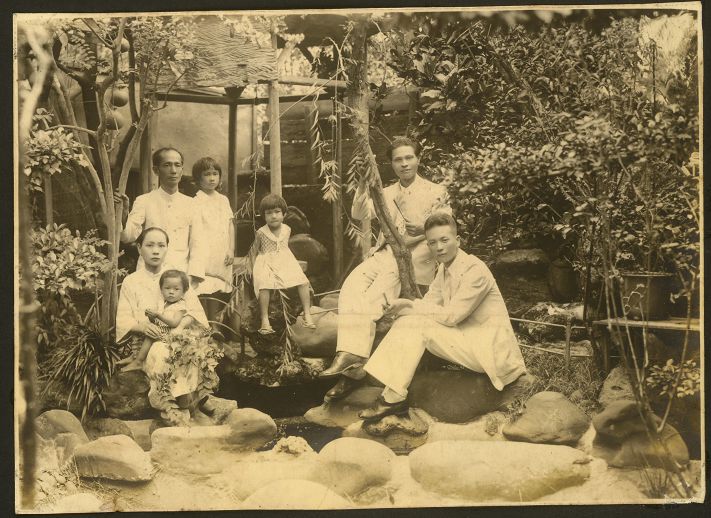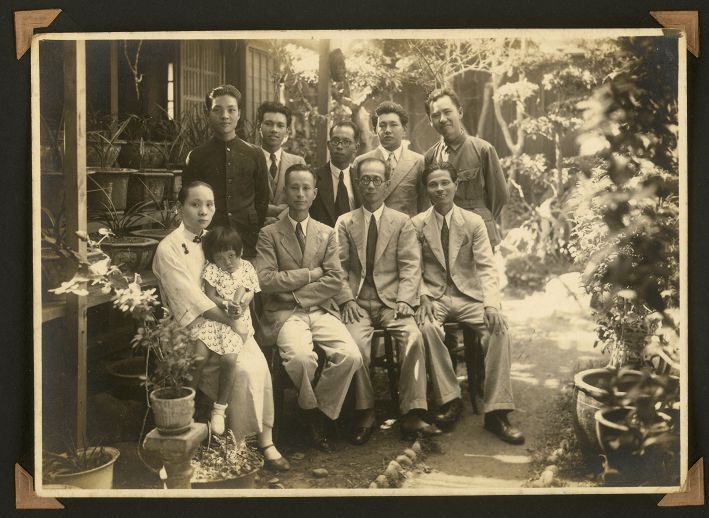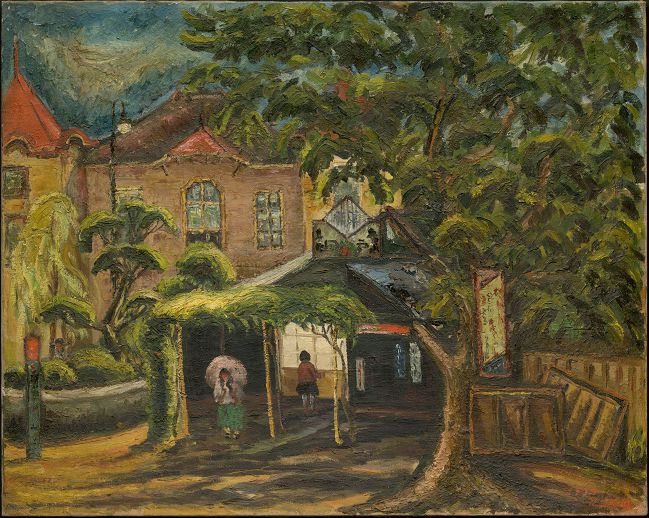
Description/
The subject of this painting is Yiyuan Garden owned by Dr. Zhang Jin-can, who was a respected gentleman in Chiayi. "Yiyuan Garden portrays a portion of Dr. Zhang Jin-can's garden in Chiayi," explained Chen Cheng-po in a 1935 Taiwan Shinmin News interview. "It emulates the classical Chinese idiom of "Southern School" ("nanzong") to express an Eastern mood." Dr. Zhang was a gynecologist, and his wife Zhang Li De-he taught at Chiayi Public School. The couple was avid supporters of charity and arts and culture. They lived on the second floor of their Zhufeng Hospital and dubbed it "Linlang Mountain Hall". Zhang Li regularly hosted cultural events here, so Linlang Mountain Hall became an important cultural hub in Chiayi, also frequented by Chen. Putting to practice his artistic tenet of fusing East and West, he applies the brushwork and view-framing concepts of the Southern School (also known as Chinese literati paintings) to oil painting. The palette is quiet and the brushwork has a childlike appeal. A bridge-and-water feature and the elegant name "Pavilion Dan" inscribed on the board hanged on the pavilion tell of the sophisticated taste of their owners.
Bibliography/
- Chuanying Yen, The Complete Collection of Taiwanese Art 1: Chen Cheng-Po (Taipei City: Artist Publishing, 1992), 37.
- Yuchun Lin, Oil‧Passion‧Chen Cheng-Po (Taipei City: Lion Art Publishing, 1998), 100-104.
- Paochai Chiang, "The Construct and Diaspora of Han-poetry—Lee Te-ho's Literary Saloon," Chinese Journal 8 (2004.06): 117-134
- Minyao Gu, "Dehe Zhang Li and Linlang Mountain Hall, Chiayi's Art and Cultural Salon," Taiwan Historica Special Ed. 35 (2010.12.31): 16-28.
- Dehe Zhang Li, "Sketching at Pavilion Dan," National Repository of Cultural Heritage, Ministry of Culture.
Originally in: Dehe Zhang Li, "Sketching at Pavilion Dan," in Cursives from Linlang Mountain Hall Vol. 1 (1953): 20.
Linlang Mountain Hall
1935
Materials & Techniques:Oil on canvas
Dimension:73x91 cm
Private Collection
Location:Linlang Mountain Hall (today's Taiwan Cooperative Bank, Chiayi Branch, No. 279, Guohua Rd., West Dist., Chiayi City, Taiwan)












